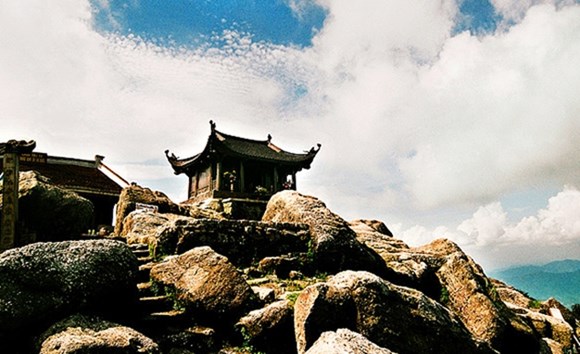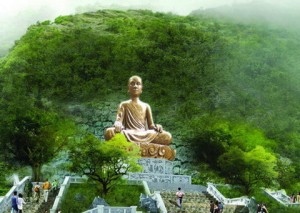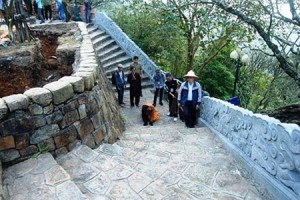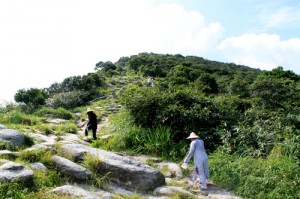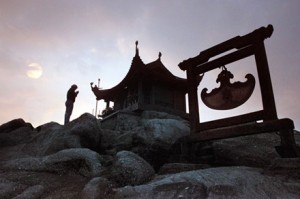Religion is one of the ways to explore culture of a country. In Vietnam, Buddhism is the largest religion and Yen Tu Mountain is the best place that you should come to learn about Vietnamese religious culture. Yen Tu historical site comprises a system of pagodas, towers, shrines and old trees scattered from Do ramp to Yen Tu Mountain in gradual height. It is located in Thuong Yen Cong commune, Uong Bi town, Quang Ninh province, about over 40 km from Ha Long city and 14 km from Uong Bi town.
Situated within the immense arched mountain range of north-eastern Vietnam, Yen Tu mountain’s peak situates Dong pagoda at the height of 1,069 above sea level. Long time ago, Yen Tu mountain was well-known as a spectacular landscape and listed as national scenic site.
Yen Tu’s beauty is the harmonious combination between the majesty of its mountains and the ancient and solemn quietness of its pagodas, shrines and towers.
At present, the system cable car of Yen Tu was brought in to public to carry the visitors to Hoa Yen pagoda of 534 m high above sea level. This place stands two 700 year old pine trees. From here, the tourists keep climbing up stone-paved path to go to the pagodas scattered on the way to Dong pagoda. Standing on the peak, the tourists could easily admire the dramatic bird’s eye-view of the Northeast region on beautiful days.
In spring, many visitors and pilgrims from everywhere flock to Yen Tu. Yen Tu festival opens from the 10th of January to the late March in lunar calendar.
Yen Tu had a pagoda for Buddha worship right from Ly dynasty called Phu Van pagoda. However, Yen Tu really became capital of Buddhism only when king Tran Nhan Tong surrendered his thrown and became a monk. He founded a Vietnamese distinctly the Zen Buddhist sect known as Thien Truc Lam. That was Thien Truc Lam and became the first progenitor with the religious name: Dieu Ngu Giac Hoang Tran Nhan Tong (1258-1308). He had hundreds of buildings built on Yen Tu Mountain to serve for religious life and sermonizing.
After his death, his successor, Phap Loa Dong Kien Cuong (1284-1330), the second progenitor of TrucLam sect compiled a set of book “ Thach That ngon ngu” during 19 years of his religious life. He also ordered building 800 large and small constructions including pagodas, shrines and towers in Vietnam with thousands of valuable statues, many of them are famous pagodas such as Quynh Lam monastery, Ho Thien lake in Dong Trieu. Besides, the sermonizing centre of Phap Loa also has the third progenitor of Thien Truc Lam sect, Huyen Quang Ly Ðao Tai (1254 – 1334).
Under Le and Nguyen dynasties, Yen Tu became the capital of Buddhism in Vietnam and got repaired and restored many times. Indeed, Yen Tu relic site is the meeting place of national culture and various architecture styles bearing the specific features of historical periods.
